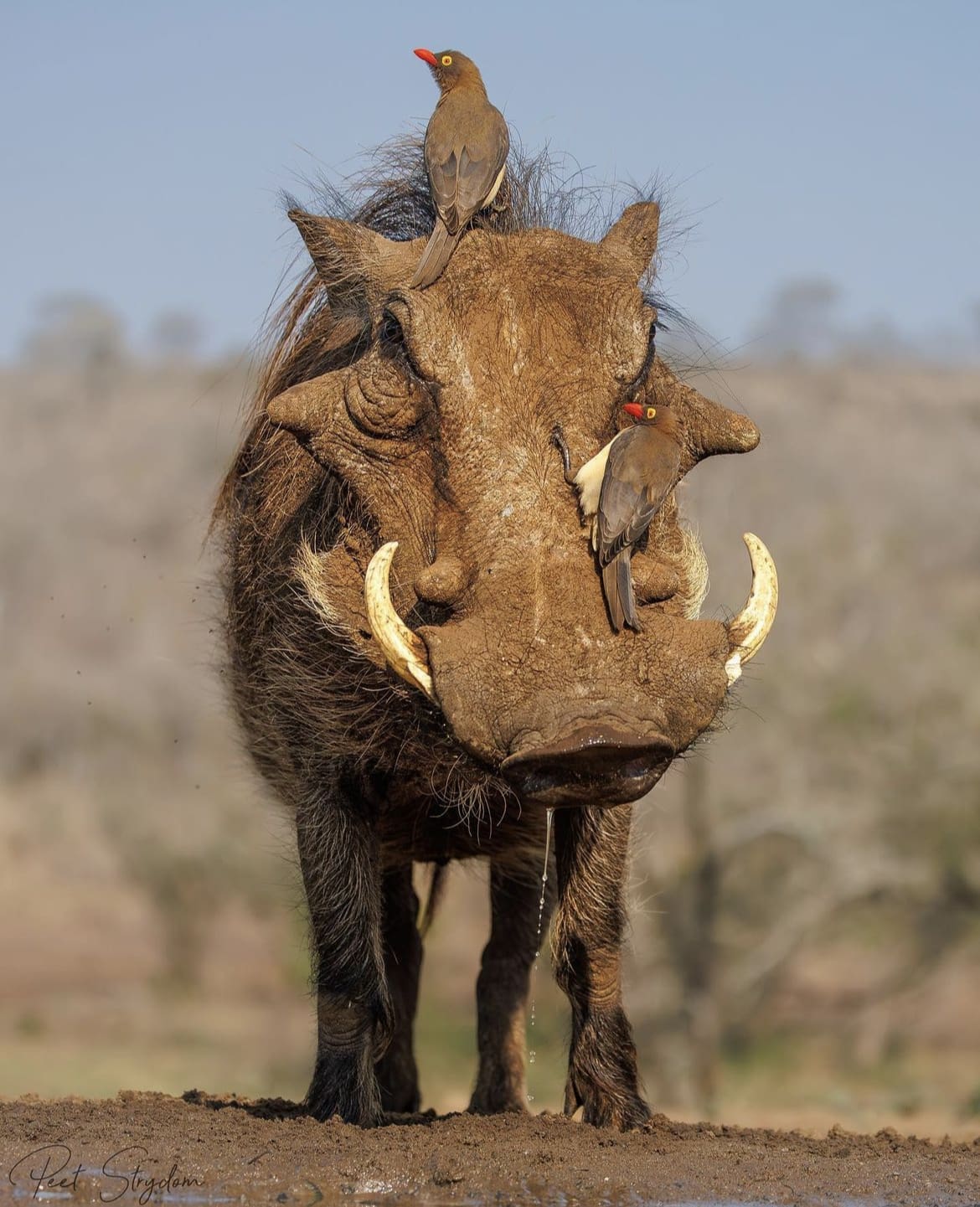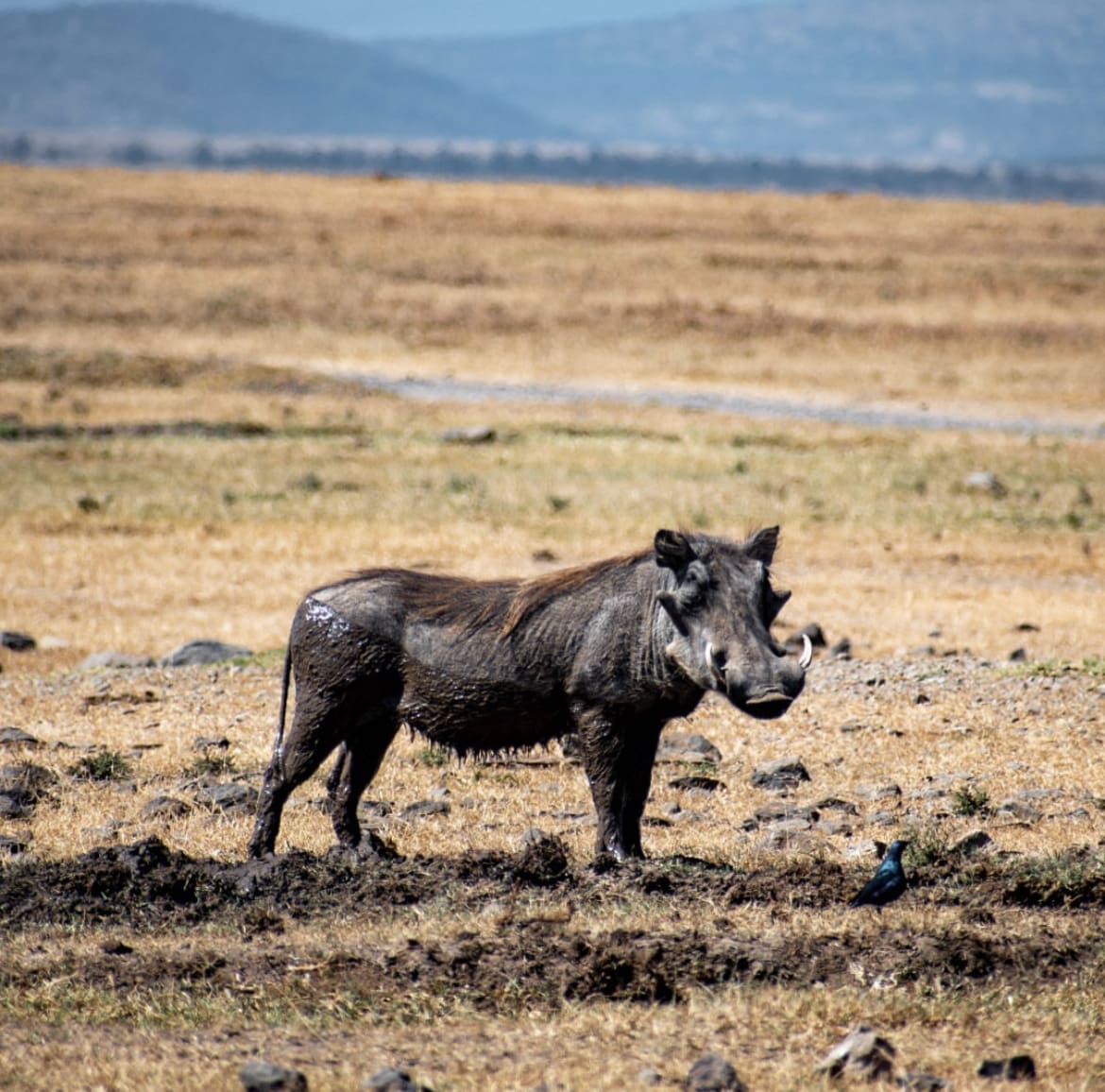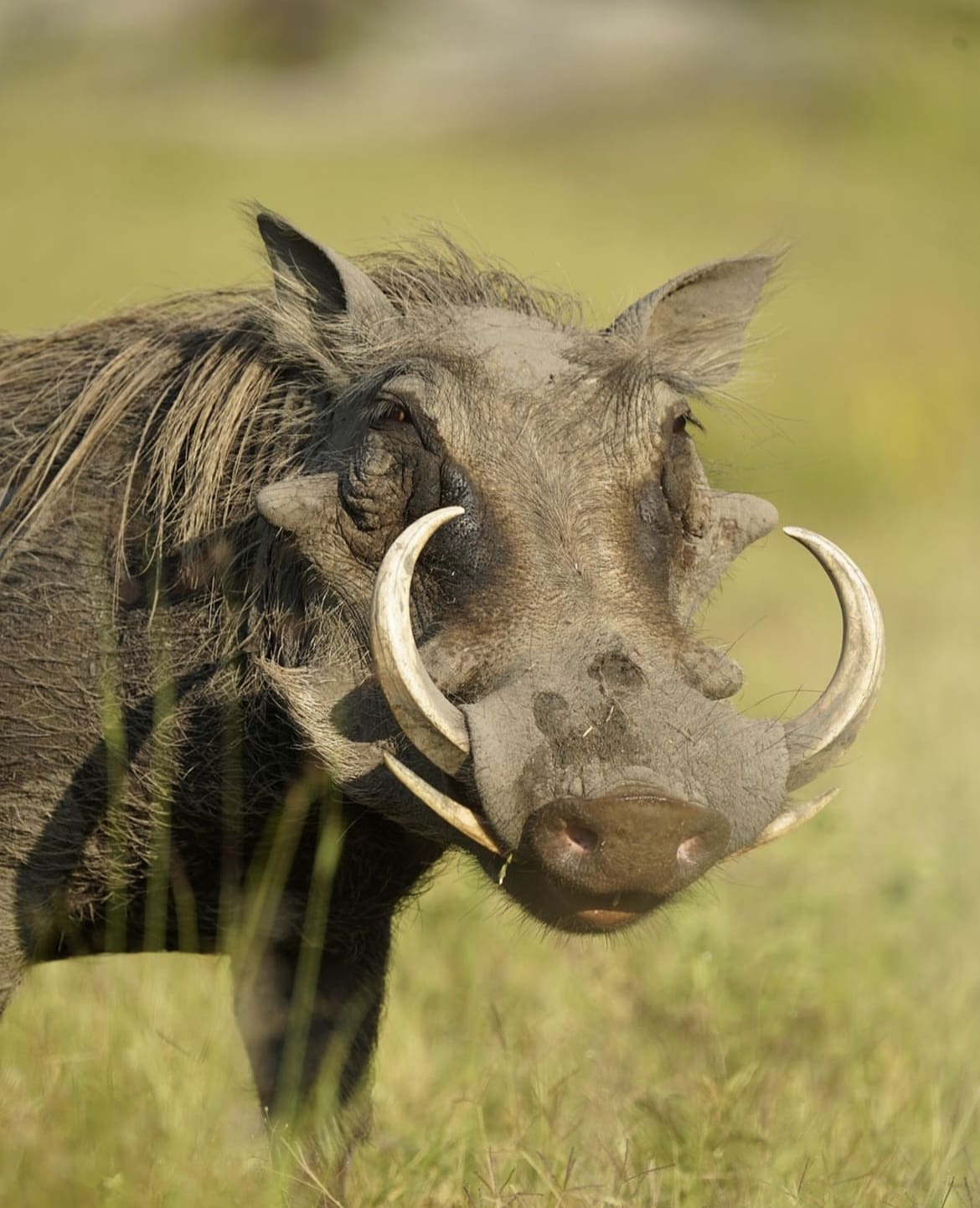Alright, let’s dive into the wild and somewhat wacky world of the warthog. These aren’t your typical backyard critters, and they’re about to become your new favorite animal obsession.
Trust me, by the end of this, you’ll be planning your next safari adventure or at least seriously updating your animal trivia game.
What is the Warthog
So, what exactly is a warthog? If you’re picturing Pumbaa from “The Lion King,” you’re not too far off, but let’s get the facts straight. Warthogs are wild members of the pig family found in the grasslands, savannas, and woodlands of sub-Saharan Africa. These aren’t your average pigs; warthogs are tough, resilient, and come with a set of features that make them perfectly adapted to the African wild.
They’ve got these peculiar facial “warts” (which aren’t warts at all, but rather thick skin pads), and a mane that would make any punk rocker jealous. Warthogs play a crucial role in their ecosystem, acting as nature’s gardeners by grazing on grass and digging for roots and bulbs with their snouts.

Warthog vs Wild Boar
Now, let’s clear up some confusion: warthogs vs. wild boars. Though they share a family tree, these two are like distant cousins who only see each other at big family reunions. First off, wild boars are more of a Eurasian affair, while warthogs are strictly African residents.
Appearance-wise, warthogs have those distinctive warts and longer, curved tusks, which give them a more formidable look compared to their wild boar relatives. Behaviorally, warthogs are surprisingly social creatures, living in groups called sounders, whereas wild boars can be a bit more solitary and, let’s say, less inclined to play nice.
The takeaway? While they might share some family traits, warthogs and wild boars lead very different lives.
What Do Warthogs Look Like?
Imagine if a punk rocker decided to go on a safari and somehow turned into an animal – that’s pretty much your warthog. These creatures are a sight to behold, with large, flat heads topped with an impressive set of tusks, which can make any dentist sweat.
Their faces are adorned with those so-called warts, which are more about protection during battles than aesthetics. Their bodies are covered in sparse, bristly hair, making them look a bit unkempt – but let’s not judge.
Perhaps the most endearing feature is their tails, which stick straight up when they run, acting like a little flag waving in the breeze. It’s nature’s way of adding a bit of comedy to the savanna.
How Big Are Warthogs?
When it comes to size, warthogs are pretty robust creatures. They’re not exactly the elephants of the savanna, but they’re far from being the underdogs. An adult warthog can weigh anywhere between 110 to 330 pounds (50 to 150 kilograms), with males typically tipping the scales on the heavier side.
They stand about 24 to 33 inches (60 to 85 cm) tall at the shoulder, which means they’re not towering giants but still hold their ground. Their size is a testament to their adaptability, allowing them to fend off predators and forage for food across the diverse African landscapes.

Warthog Tusks
One of the warthog’s most iconic features are it’s formidable tusks. These aren’t just for show; warthog tusks are serious business. They’re actually elongated canine teeth that keep growing throughout their lives. The upper set can grow impressively long, curving upwards, while the lower set is sharp and used primarily for combat and digging.
These tusks aren’t just a defense mechanism against predators; they’re also handy tools for breaking into hard ground in search of food. It’s like having your own built-in survival kit – if you’re a warthog, that is.
Warthog Tails
And then there’s the warthog tail – possibly the most amusing feature of all. When a warthog decides to high-tail it out of there (pun absolutely intended), their tail sticks straight up in the air.
It’s not just a quirky trait; it serves a purpose. This erect tail acts as a signal to other warthogs, especially in tall grass where visibility is low. It’s like saying, “Follow me!” in warthog language. But let’s be honest, it also adds a touch of humor to the otherwise serious business of survival in the wild.
What Do Warthogs Eat?
Warthogs are the ultimate opportunistic feeders, making them fascinating subjects of dietary habits in the wild. Primarily, they’re grazers, favoring a menu that includes grasses, roots, and berries.
During the wet season, they’ll happily munch on fresh grass, but as the seasons change and resources become scarce, they switch to digging for roots and bulbs with their hard snouts and powerful tusks. This adaptability in diet allows them to thrive in various environments. They are not picky eaters, and this flexibility is a key to their survival in the unpredictable African wild.
@kaylaz.wildlife
Do Warthogs Eat Meat?
Now, here’s a twist in the plot: warthogs, though predominantly herbivores, have been known to partake in a bit of meat on occasion. This doesn’t make them carnivores by any stretch, but they’re not above scavenging for a protein fix.
They might feast on a carcass if the opportunity presents itself or munch on insects for a snack. This omnivorous side of warthogs is a testament to their adaptability and willingness to make the most of their surroundings, breaking the mold of what we typically expect from a pig-like creature.
How Fast Are Warthogs?
When it comes to speed, don’t let a warthog’s somewhat cumbersome appearance fool you – these animals can book it when they need to. Capable of speeds up to 30 miles per hour (about 48 kilometers per hour), they can give most predators a run for their money. This speed, combined with their agility, makes warthogs surprisingly adept at evading danger. Whether it’s outmaneuvering a lion or darting into the safety of a burrow, their quick legs are a key survival tool in the vast and predator-filled African landscape.
The image of a warthog sprinting across the savanna, tail erect and tusks gleaming, is not just a testament to their unique charm but also to their remarkable adaptations for survival. Their diet allows them to thrive across seasons, their willingness to eat meat demonstrates their opportunistic nature, and their speed ensures they live to graze another day. These aspects of warthog life paint a picture of an animal perfectly attuned to its environment, embodying the essence of adaptability in the wild.
Are Warthogs Territorial?
When it comes to real estate, warthogs have a pretty laid-back attitude. They’re not the type to fuss over territory like some of their savanna counterparts. Instead, warthogs are somewhat nomadic, moving around in search of food and water, which makes them more social and less territorial. However, that’s not to say they don’t have their personal space.
Males, especially during mating season, might stake a claim to a particular area to attract females, but this is more about showing off than an outright territorial battle. This social flexibility helps them adapt to the changing seasons and resources available in their environment.

Are Warthogs Aggressive?
Now, onto their temperament. Warthogs might look formidable with those tusks, but they’re generally not looking for trouble. They prefer the flight to fight, choosing to bolt into their burrows tail-first at the first sign of danger.
However, if cornered or if their young are threatened, they won’t hesitate to use those tusks in defense. This defensive aggression is more about protection than hostility. So, while they can be aggressive when necessary, warthogs are more about minding their own business and keeping to themselves.
Warthogs as Pets
The idea of having a warthog as a pet might sound like a quirky adventure, but it’s not as simple as it seems. First off, warthogs are wild animals, and their needs and behaviors are best suited to the African savannas, not a backyard or home. They require a vast amount of space to roam, a diet that’s hard to replicate in domestic settings, and, let’s not forget, those tusks can be quite destructive.
While there are stories of warthogs being tamed, it’s important to remember that their well-being and the safety of those around them are paramount. It’s always best to admire these creatures in their natural habitat, where they can live as they were meant to, wild and free.
Where Do Warthogs Live?
Warthogs call the vast, open landscapes of sub-Saharan Africa their home. They are predominantly found in grassland, savanna, and woodland regions, where water is accessible. These environments provide the varied diet they thrive on, from grasses and plants to the occasional insect.
Warthogs are particularly fond of burrows, which they use for sleeping, raising their young, and escaping predators. Interestingly, they aren’t the architects of these burrows but rather the opportunistic inheritors, often taking over abandoned aardvark holes. This adaptability to their environment showcases the warthog’s resourcefulness and resilience.

How Many Warthogs Are There in the Wild?
Quantifying the exact number of warthogs in the wild is challenging due to their wide distribution and the variability of their populations across different regions.
However, they are generally considered to be of ‘Least Concern’ by the International Union for Conservation of Nature (IUCN), indicating that their population is stable in most areas. This status is a testament to their adaptability and ability to survive in a range of environments.
Despite this, local populations can be affected by habitat loss, hunting, and competition with domestic livestock, which makes ongoing monitoring and conservation efforts important.
Are Warthogs Endangered?
Given their classification as ‘Least Concern,’ warthogs are not currently endangered. This resilient status, however, does not imply they are without threat. Habitat degradation, poaching for their meat and tusks, and competition for resources with livestock are significant challenges. Conservation measures are in place in various regions to address these threats, focusing on habitat preservation and sustainable land management practices. Education and community involvement are also key components of these efforts, ensuring local populations understand and support the conservation of warthogs and their habitat.
The exploration of warthog habitats, their population status, and conservation challenges sheds light on the intricate balance between these animals and their environment. Their ability to adapt and thrive in diverse conditions speaks to the resilience of warthogs, but it also highlights the importance of continued conservation efforts to ensure these unique creatures remain a fixture of the African landscape for generations to come.
Threats to Warthogs in the Wild
While warthogs are adaptable and resilient, they face several threats that could impact their populations. Habitat loss due to agricultural expansion is a significant concern, as it reduces the natural areas available for warthogs to live and feed. Poaching is another issue, with warthogs hunted for their meat and tusks. Disease, both natural and transmitted from domestic animals, can also affect wild populations, highlighting the importance of wildlife health monitoring and management.
Where to See Warthogs on Safari
For those eager to witness warthogs in their natural environment, several African countries offer prime viewing opportunities. The Serengeti and Maasai Mara reserves are fantastic places to start, where warthogs are often seen grazing or trotting along with their tails in the air.
Kruger National Park in South Africa and Etosha National Park in Namibia also provide excellent warthog sightings, among diverse wildlife experiences. These parks not only offer a chance to see warthogs up close but also contribute to conservation efforts through eco-tourism.
Tips for Spotting Warthogs in the Wild
Spotting warthogs can be an exciting part of any safari adventure. Early morning or late afternoon, when warthogs are most active, are the best times to catch them out and about. Look for them in open grasslands or near waterholes, where they often go to drink and cool off. Keeping an eye on abandoned burrows can also pay off, as warthogs use these for shelter. Lastly, patience is key; like all wildlife viewing, taking your time and enjoying the surroundings will increase your chances of a memorable warthog sighting.
Facts about Warthogs
- Warthogs can live up to 15 years in the wild.
- Despite their bulky appearance, warthogs can kneel to eat and dig for roots.
- They use their tusks not only for defense but also to compete for mates.
- Warthogs have a mutualistic relationship with birds like banded mongooses, which groom them for parasites.
- When running from predators, a warthog family will line up single file, with the youngest sandwiched safely in the middle.
Myths about Warthogs
- Myth: Warthogs are inherently aggressive. Truth: They are generally peaceful and prefer fleeing to fighting.
- Myth: Warthogs are not intelligent. Truth: They are quite smart, using complex social strategies and remembering water and food sources.
- Myth: Warthogs wallow in mud because they are dirty animals. Truth: They do this to cool off and protect their skin from the sun and parasites.
Warthogs may not be the first animal that comes to mind when you think of African wildlife, but they are undoubtedly one of the most interesting. From their distinctive looks and surprising speed to their resilience and adaptability, warthogs are a fascinating study in survival.
Whether you’re observing them on a safari or learning about their behavior, warthogs remind us of the complexity and interconnectedness of the natural world.
So, the next time you spot one, whether in person or in a documentary, give a little nod to these remarkable creatures that trot across the African savanna, living their best lives, tusks and all.

